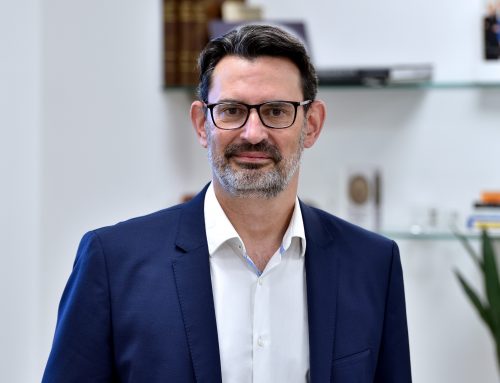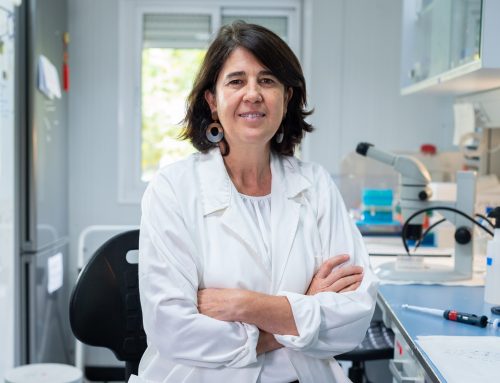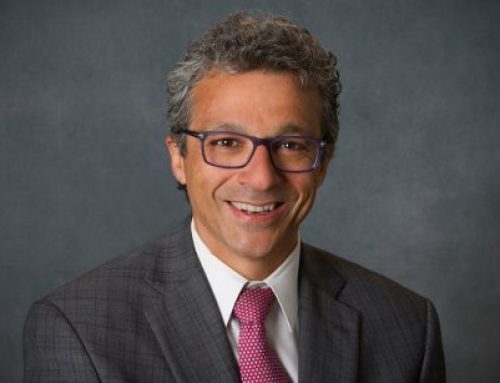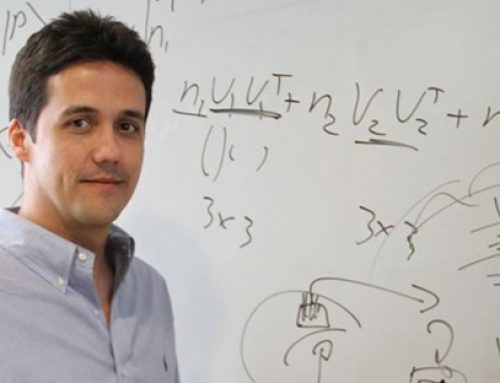- He is an internationally renowned education specialist who believes that neuroscience and education must go hand in hand.
- «Knowing how the brain works will help young people with neurological disorders learn better in school.»
- Ortiz will attend the Querer Foundation’s IV Neuroscientific and Educational Conference.
Tomás Ortiz Alonso is a Professor of Medical Psychology at Madrid’s Complutense University. He is an internationally renowned neuroscientist and education specialist who creates neuroeducational programs for children with the firm belief that neuroscience and education must work hand in hand, especially when it comes to the learning of children with specific educational needs. “Neuroscientists and educators must work holistically if we want to improve the learning and social integration processes of children with neurological problems,” he says.
On April 26, he will speak about the relevance of the ‘bottom up’ neurobiological process in education at the Fundación Querer’s IV Neuroscientific and Educational Conference. “It is an honor to participate in this event because it allows me to disseminate research in neuroeducation to society,” he states. Furthermore, Doctor Ortiz is conducting a foundation research project that explains the influence of the Duchenne smile on the attention and memory of children with learning disabilities, this project will be displayed at the conference.
Question: How do positive emotions affect a child’s school learning and cognitive abilities?
Answer: Emotions are important in all aspects of our lives, particularly since they affect attention, memory, and learning in both the short and long term. They must also work to promote classroom involvement and motivation and, as a result, academic performance. Thus, when the environment in the classroom is pleasant, the emotional brain receives external cues better, allowing knowledge to be gained more quickly and retained for a much longer period of time.
Q: At the Fundación Querer, you supervise a research project on the influence of the Duchenne smile on the attention and memory of children with learning disabilities. Why did you chose this particular facial expression to stimulate these children?
A: According to neuroscience, there are two brain paths in the perception of emotions: one quick, through the limbic system, and another sluggish, related with the frontal lobes. We incline toward the Duchenne smile for these children’s neuroeducational development since it is automatic, integrated from birth, and has an immediate response in our body.
Q: What is the appearance of this form of smile, and what reaction does it elicit in children’s neurological systems?
A: The Duchenne smile is spontaneous and natural. The zygomaticus major and minor muscles contract, lifting the corners of the mouth and the orbicularis, causing creases around the eyes and cheek elevation. This form of smile contains a strong emotional charge, stimulating the limbic system. A “social smile” is a sort of smile in which the orbicularis does not contract and the neurons engaged are cortical mirror neurons, which are responsible for empathy and sociability.
«Emotions are essential to promote classroom involvement and motivation and, as a result, academic performance..»
Q: How did you select children for the study?
A: The study included children from ‘El Cole de Celia y Pepe’ who had a variety of neurological diagnoses such as autism, Specific Language Disorders (SLI), dysphasia, dysexecutive syndrome, epileptic encephalopathy, or rare diseases such as Dias-Logan syndrome, fragile X syndrome, or Landau Kleffner syndrome.
Q: What were you hoping to achieve with this project?
A: The major goal was to determine whether there is an improvement effect in task execution due to the association with a family member’s Duchenne smile. The task requires attentional processes, working memory, and simple decision making, all of which are carried out by a simple motor response. Our distinct priority and unidirectional goal is to improve schoolchildren’s attention, memory, and school learning processes. We sought to see if the Duchenne smile prior to a cognitive process, could reduce response time, improve correctness, and eliminate errors in task execution, both cerebral and motor, and, as a result, a positive development of school learning.
Q: For the study, ESNE conceived and built a game for training and data gathering. What was it, and how did it help with the study process?
A: The study lasted around five months and was conducted utilizing a tablet game created by the ESNE research team. The game consisted of flashing a series of screens for a brief period of time, customized to the children’s attention limitations. A face was displayed on a screen beside a representation of a commonplace object that children could easily recognize. The face could be that of a family member with a Duchenne smile, or it could be that of an anonymous individual in an emotionally neutral stance. After an exposure time, the game switched to another screen where the object was displayed next to another object. The game waited for the child to touch one of the objects on the screen with his finger for a set period of time. Faces and items, as well as their placement, were chosen at random.
The game has a behavioral test in addition to instruction. Instead of being carried out in a laboratory, it incorporates a visual aesthetic, objects, sound effects, optional accompanying music, and positive rewards typical of a game, allowing the study to be carried out remotely and constantly, both at school and at home.
«The children significantly increased executive responses, reaction time, and correctness linked with the Duchenne smile.»
Q: Could you tell us the outcome of this investigation?
A: The findings will be published in an international journal, but in summary, the children greatly improved their executive responses, reaction time, and correctness associated with the Duchenne smile at the end of the study, indicating that the children’s attention and working memory improved in the associative learning process when faced with smiling.
Neuroscience and education are two related disciplines.
Q: In your book, ‘Neuroscience and Education,’ you suggest that neuroscientists create a new discipline called neuropedagogy. What would it entail?
A: Neuropedagogy is a discipline whose object of study is the development of various pedagogical methods and content in the educational field based on neuroscientific knowledge about how the brain works and learns, capable of modifying the structure and functioning of the child’s brain through school practice. In order to increase and optimize classroom learning, educators must get information and comprehend the brain’s theories on cognitive processes. Having said that, we are still in the research phase. Neuropedagogy is not currently a discipline, nor is it part of a university degree in pedagogy or a school teaching topic.
Q: What role does neuropedagogy play in the education of children with neurological disorders?
A: It introduces two crucial concepts in the field of special education. On the one hand, understanding how the brain changes in response to external stimulus and school learning, which determines brain form and functionality. The brain is constantly perceiving, processing, and integrating information, which causes changes in its neuronal networks and connections. These modifications are simple and occur to a greater extent during the earliest years of life, when neuroplasticity is higher.
Neuropedagogy, on the other hand, provides new techniques of school learning based on brain neurodevelopment, both in cases with neurological abnormalities and in children who do not have any type of alterations. Knowledge of the brain’s functioning and development processes will enable the development of neurodidactic programs aimed at increasing school learning in a faster and more effective manner. Sensory stimulation that is sustained over time, well-organized, coordinated, and directed toward a goal, effectively activates the brain to establish stable neuronal learning highways.
Q: You will speak on a panel about the ‘Importance of scientific research in special education policies’ at the Fundación Querer’s Neuroscientific Conference. Could you tell us about your presentation?
A: I will discuss the importance of the ‘bottom up’ neurobiological process in education, namely the brain’s ability to remodel based on the activity and synchronization of subcortical structures, as well as the activity of the cognitive cerebral cortex. Its reasoning is based on the fact that these structures are capable of restructuring sensory input and directing it towards cerebral targets connected with cognitive function learning. So, without any doubts, sensory-based instruction as a means of developing cognitive processes is a really fascinating pedagogical strategy. In other words, because of the novel neurobiological tools obtained from sensory stimulation, increasing sensory processes will be critical in improving cognitive functioning.
Q: How significant are ‘bottom up’ neuroeducational programs in helping the cognitive processes of children with neurological problems?
A: One of the major issues that education presents to us in today’s culture is determining how to educate in an environment full of environmental stimuli where the ability to create lasting neural connections is severely compromised. The everyday, systematic, and organized action of specific stimuli is connected with the formation of a neural network of cognitive processes. Although most studies link this learning process to the stability of neural networks in the cerebral cortex, we believe that a neurobiological process occurs prior to the network’s stabilization: ‘bottom up’. This bottom-up neurobiological mechanism detects the physical properties of inputs, allowing for an enhancement in neurodevelopment and subsequent cognitive performance.
«The ‘bottom-up’ neurobiological approach will improve sensory processes, which are critical for cognitive development in children with neurological problems.»
Q: So, what exactly is the ‘bottom-up’ neurobiological process?
A: It is a semi-automatic process that begins at birth and allows for the prior strengthening of subcortical networks, which are generated on a daily basis through the experience of simple sensory and motor stimuli capable of modulating, redirecting, and reorienting the multiple cortical networks that are ultimately responsible for cognitive processes. This approach is justified by the fact that basal attention and subcortical alerting are required for the establishment of new neural connections, as well as cortical remodelling and the formation of stable cognitive brain circuits.
As a result, neuroeducational methods based on the ‘bottom-up’ neurobiological process will strengthen fundamental sensory processes, which are critical for the cognitive development of children with neurological issues. If we begin with the assumption that the cognitive process comes to us first and foremost through the senses, there is no doubt that its development is critical in the learning process.
Q: How do computer approaches or technology support help children with neurological disorders learning better?
A: Paper, chalkboard, and pencil have been the primary tools for knowledge development and classroom learning enhancement. However, the use of digital whiteboards, computers, tablets, and other devices in the educational environment is already a reality, and using them in learning processes is an essential competence in the classroom because they improve the ability to pay attention to different rhythms, needs, and objectives of each student. However, in order to be more effective, we must match these new technical methods to the way the brain processes information. In this respect, ‘bottom-up’ training allows for brain synchronization of stimuli, which is essential for neurological maturation processes.
Q: So, why is the adoption of these technologies important?
A: Because they allow regular, daily, repetitive, and synchronized activity at the brain level capable of stimulating dendritic growth, increasing the number of synaptic connections between existing ones, and developing greater brain maturation, which allows improving response capacity, reducing reaction times, and errors, as well as increasing successes and automatic processes that modulate conscious activity, which is so important during school learning.
« If we wish to improve the cognitive and social integration processes of children with neurological impairments, neuroscientists and educators must collaborate holistically.»
Q: What are the educational consequences of this?
A: The technologies used in neuroeducation programs will enable us to adapt the way we learn based on how the brain operates. Also, the brain synchronizes multisensory stimulations (olfactory, gustatory, visual, auditory, and tactile), personalizes learning based on each child’s neurological characteristics, and acquires useful information to enhance, expand, and improve the human capacity to build and generate knowledge. Emotiv Insight, a wireless electronic gadget that collects brain waves and transforms them into relevant data using patented algorithms to improve focus, relaxation, or stress reduction, or my neuroeducational program HERVAT, are two examples.
Q: How should neuroscientists be included in the educational planning of children with exceptional needs?
A: Because creating a neural network requires a significant amount of time and effort, it is critical to understand teaching and brain training methods. The educator must understand the stimuli, including the frequency, intensity, repetition, and synchronization of simple sensory stimuli, in order to promote dendritic growth and enhance the number of synaptic connections, which will greatly aid school learning.
Q: Do you believe that neuroscientists and educators still need to collaborate more holistically?
A: Certainly. If we wish to improve the cognitive and social integration processes of children with neurological impairments, neuroscientists and educators must collaborate holistically.
Q: Is Special Education an early pioneer in this integrative work?
A: Not at the moment. Because these children have various neurofunctional difficulties that make formal school learning challenging for them, educational work with them demands a lot of time and effort on the part of educators. Because these children have several neurological issues that significantly alter educational systems, collaboration between neuroscientists and teachers is becoming increasingly important in this sector of education. If we want to be effective in their learning, we should work together to create a program of activities, information, and experiences capable of producing effective neuroeducational programs for in






















